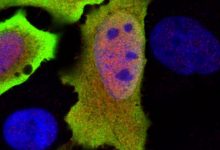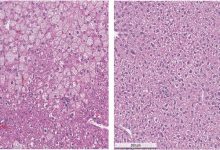
A new study done by a collaborative team from Northwestern University Feinberg School of Medicine and Francis Crick Institute in London, led to more and in-depth understanding of sex determination process by identifying the enhancer regulating sex determination process. Furthermore, this finding also led to the understanding of differences in sex development (DSDs) condition in which lead to male-to-female sex reversal.
Sex determination is a process during which the embryo which is made from the fusion of egg and sperm develops into either testes and ovaries. This new study was more focused on the role of non-coding DNA also known as Junk DNA in regulating development of an embryo by regulating the Sox9 gene.
Sox9 gene plays a vital role in the male sexual development and inhibits female reproductive system development. If this gene is mutated or irregularly expressed, individual with male chromosome i.e. XY can develop ovaries instead of testes.
During their study, the scientist identified a non-coding region which acts as an enhancer for regulating expression of SOX9 gene. An enhancer is the short part of DNA which increases gene transcription.
In the laboratory, researchers used mice as a test model and deleted the enhancer region from the mice and found complete sex reversal due to decrease expression of an enhancer. This led to the development of ovaries in a mouse having male chromosomes XY and developed into female phenotypically.
This is for the first time scientists have identified an enhancer of Sox9 that which on mutation or when lost causes sex reversal.
The findings have the potential to improve the genetic diagnosis of patients with DSDs in the future; as compared to a current situation where only about 20 percent of such patients receive a genetic diagnosis.
“We believe that many undiagnosed patients have mutations in regulatory regions — such as the one that we identified near Sox9 — and regulatory regions are usually not investigated by genetic testing,” said Salamone, who is now completing her degree in the laboratory of Elizabeth McNally, MD, PhD, director of the Center for Genetic Medicine. “Often genes important for sex determination are also crucial for other developmental processes, and a mutation in one gene or its regulatory region can impact a patient’s health in many ways. As we begin to understand the genetic underpinnings of these disorders, we can improve our care of these patients.”
The next step of the team is to examine other enhancers which have an important role in regulating Sox9 and other sex-determining genes. Furthermore, researchers will also study sex determination process in females i.e. how Sox9 expression is repressed in females which leads to the development of ovaries.
“The datasets we’ve produced can be used as a roadmap to regulatory regions of other genes important for gonad development,” Futtner said.






